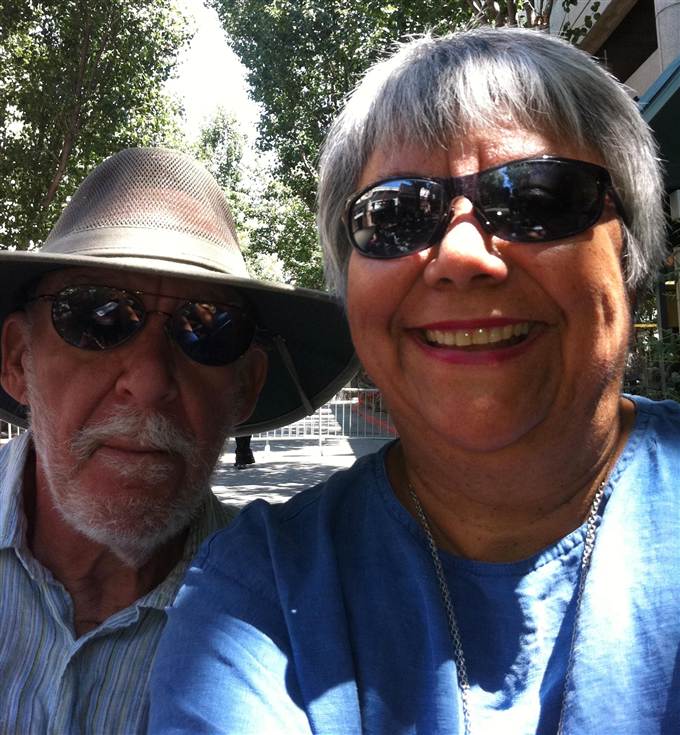Women are carrying the bigger burden of Alzheimer’s disease in the U.S., according to a new report — making up not only most of the cases, but paying more of the cost of caring for the growing population of people with the mind-destroying illness.
The new report from the Alzheimer’s Association paints Alzheimer’s as a disease that disproportionately affects women, both as patients and as caregivers. It points out that women in their 60s are about twice as likely to develop Alzheimer’s over the rest of their lives as they are to develop breast cancer.
“So women are at the epicenter of Alzheimer’s disease today, not only by being most likely to be diagnosed with Alzheimer’s, but also by being the caregiver most of the time,” said Maria Carrillo, vice president of the advocacy group.
Alzheimer’s affects more than 5 million Americans, a number projected to soar to 13 million over the next 35 years. A study published earlier this year suggested it’s a big killer, taking down more than 500,000 Americans every year.

Three out of five of those living with Alzheimer’s are women, the report finds. “The surprising statistic we pulled out of this report actually is that women over 65 have a one in six chance of developing Alzheimer’s disease, in comparison to one out of 11 in men,” Carrillo said. And that compares to a one in eight lifetime risk for developing breast cancer.
“John and I had a whole plan. And all of a sudden, that was not going to happen.”
Even if they escape the disease themselves, women often are burdened in another way, by having to care for afflicted loved ones. There are more than twice as many women as men taking care of someone with Alzheimer’s all day, every day, the report finds.
One of them is Angie Carrillo of San Jose, Calif. Carrillo — no relation to Maria Carrillo — was stunned when her then-61-year-old husband, John Wallace, was diagnosed with Alzheimer’s in 2008. Things went downhill quickly and Wallace, an accountant, lost his job.
“John and I had a whole plan. And all of a sudden, that was not going to happen,” Carrillo, now 61 herself, told NBC News.
“He had long-term disability, but in order to qualify for that, you had to be disabled for 90 days. So for 90 days, we didn’t have his income, and not that we were living large, but we were spending our paycheck.”
They had to dip into retirement savings.
“It was a scramble to keep my job, go to all of these doctor’s appointments to verify that John indeed was disabled,” Carrillo added.
It’s a pattern the Alzheimer’s Association sees across the country.
The report finds that 20 percent of women cut their working hours from full-time to part-time while caring for someone with Alzheimer’s, while just 3 percent of men did. Federal survey data show that 65 percent of caregivers for patients with dementia are women.
The group analyzed data from federal health surveys, the Census Bureau, National Alliance for Caregiving, AARP and its own poll of 3,000 people to show that 18 percent of women have taken a leave of absence to care for someone with Alzheimer’s, and 11 percent of men have. Eleven percent of women say they have quit their jobs, while 5 percent of men have. Ten percent of women say they’ve lost job benefits because of time taken to care for an Alzheimer’s patient.
“It was a scramble to keep my job.”
And at the same time, they’ve often lost income from a disabled spouse.
“We’re still dipping into our retirement funds,” Carrillo said. “Someone told me, ‘You need to go talk to a good CPA’ and I said, ‘I have a good CPA. Unfortunately, he has dementia’,” Carrillo said.
The disease also hits family life, including grandchildren. “We were the family hub,” Carrillo remembers. “All of the birthdays happened here, all of the holidays … we had six grandchildren sleeping in the den.”

Dementia changed that. “It went from a really happy place to a place that’s not so happy. Papa all of a sudden wasn’t able to drive a car and take them to the skate park … or to go play miniature golf with them … so our life became smaller and smaller,” she said.
This can leave women feeling alone, the report finds. “The higher care giving burden placed on women has many consequences, including higher emotional and physical stress, strained family relationships and lost employment opportunities,” it concludes.
Carrillo eventually had to put Wallace into a full-time care facility. He would wander and get lost and couldn’t be left alone for a moment.
“The memory care facility he’s in now is $5,000 a month,” Carrillo said Carrillo, who blogs about her situation.
“I don’t quite know where I’m going to get that money,” she added. “So I’m in the process right now of creating a rental space in my home.”
Medicaid will help, but only once Carrillo is broke. And that often happens, the report finds.
“Given the high average costs of these services (adult day services, $72 per day; assisted living, $43,756 per year; and nursing home care, $83,230 to $92,977 per year), individuals often deplete their income and assets and eventually qualify for Medicaid,” the report reads. “Medicaid is the only public program that covers the long nursing home stays that most people with dementia require in the late stages of their illnesses.”
The Alzheimer’s Association says the total national cost of caring for people with Alzheimer’s and other dementias is projected to reach $214 billion this year. The report calculates that unpaid caregiving by family and friends would add up to another $220 billion.
“In 2014, the cost to Medicare and Medicaid of caring for those with Alzheimer’s and other dementias will reach a combined $150 billion with Medicare spending nearly $1 in every $5 on people with Alzheimer’s or another dementia,” the association says.
Right now, there are no good treatments for Alzheimer’s and certainly nothing even close to a cure. The biggest advance lately is a blood test that appears to show who’s likely to develop symptoms — but researchers say all that really does is provide a way for people to prepare for the inevitable, and perhaps for their doctors to try treating them earlier to see if current less-than-useful medications might do better in someone who hasn’t begun to show memory loss yet.
“Despite being the nation’s biggest health threat, Alzheimer’s disease is still largely misunderstood. Everyone with a brain — male or female, family history or not — is at risk for Alzheimer’s,” said Angela Geiger, chief strategy officer of the Alzheimer’s Association.
Although millions of Americans are in the same situation as Carrillo, “It’s a lonely journey,” she said.

